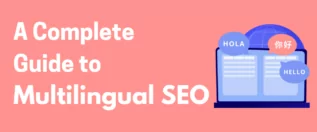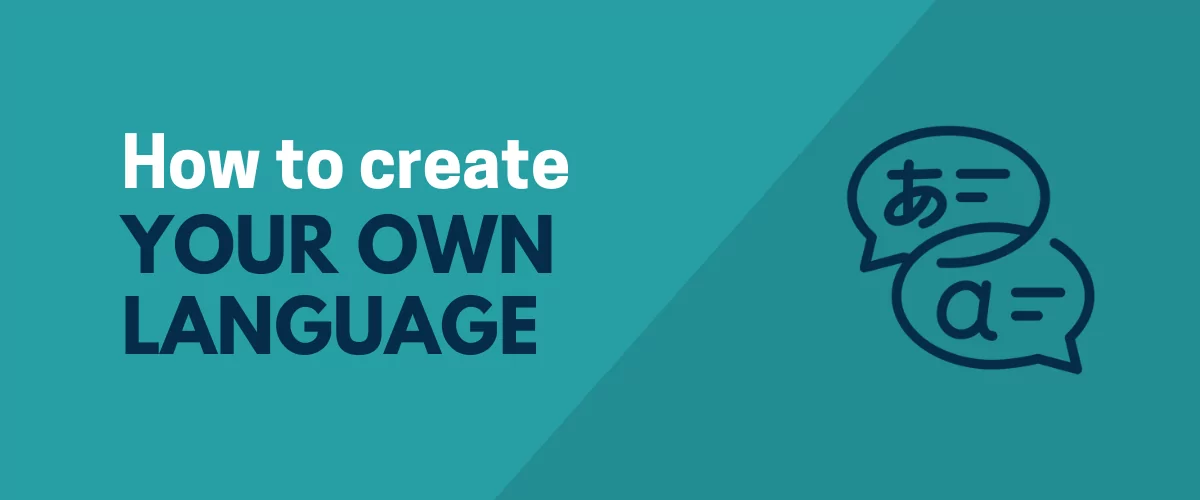
In this post
If you could create your own language, what would it sound like? What rules would govern it? How would it be different from other, existing languages?
These are interesting questions, aren’t they? We usually think of language as something that already exists and that we choose to or are forced to learn, not something we have the power to bring into being. And yet, there is nothing stopping you from doing so.
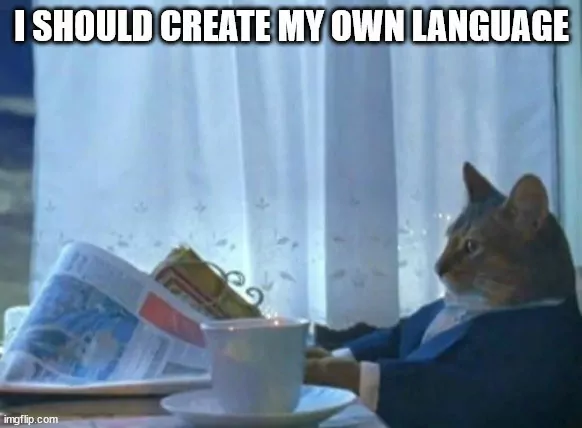
In fact, creating your own language can be super useful. As a writer, it can lend extra credibility to your fictional universe. For scholars of linguistics, it’s a great way to gain a more intimate understanding of how language works. If you are ambitious, you might attempt to provide an easier way for people to talk to each other. Finally, it can simply be a fun new hobby.
The fact is, people have been creating languages for hundreds of years and continue to do so. If you are interested in learning how to do so, you find step-by-step instructions in this article. We will even show you how to translate your website into your own made-up language. Wouldn’t that be exciting?
Why Would You Try to Create Your Own Language?
We’ve already touched on different reasons to create your own language in the introduction. To give you a better understanding of how it can be helpful, let’s talk about them in more detail.
Build a More Immersive Universe for Movies, TV, Books, or Video Games
Surprisingly often, languages are made up for works of popular culture. There are a number of fully fleshed-out vernaculars out there that mainly exist to make works of fiction more vivid. Some well-known examples include:
- Languages of Middle Earth — For his Lord of the Rings universe, author J. R. R. Tolkien brought no less than 15 languages to different stages of completeness. Among them are two dialects of Elvish as well as Dwarvish, Entish, and Orcish. Many of his languages are even related to each other and have their own alphabets. Though a linguist by trade, Tolkien started creating languages as a hobby as early as his teens and later used them as a basis for his world building.
- Dothraki and High Valyrian — These two examples are also from a work of fiction, namely the popular Game of Thrones series. While only a few words appear in the books, the languages were greatly fleshed out for the TV series. Their creator documents the process in a Wiktionary-style repository and there is also a course on Duolingo, if you want to learn High Valyrian.
- Klingon (tlhIngan Hol) — In the Star Trek universe, Klingon is spoken by an alien race of the same name. Similar to how it happened for Game of Thrones, originally only a few words of the language appeared in the first movie before being developed further into a full language. By now, hobbyists have translated different literary works into Klingon and it, too, has a course on Duolingo.
- Na’Vi language — The final example is the languages spoken by the Na’vi, the blue alien race from the movie “Avatar”. It is the work of Paul Frommer, a linguistics expert. At the time of the first movie only about a thousand words existed, by now there are several thousand as well as complete grammar.
Made-up languages appear in many other movies, TV series, and even video games. If you are a writer, screenwriter, or other creative type, they are a great way to make the world you are spinning more believable.
Produce a Better Language
Besides needing a way for a fictional alien race or magical creatures to converse, there are also examples from history where people tried to introduce new languages for other reasons.
The most well-known example here is Esperanto. Its inventor wanted to develop a universal language in order to make it easier for people around the world to communicate and collaborate. Today, it is the most widely used language of its kind. Estimates say there are about 100,000 speakers.
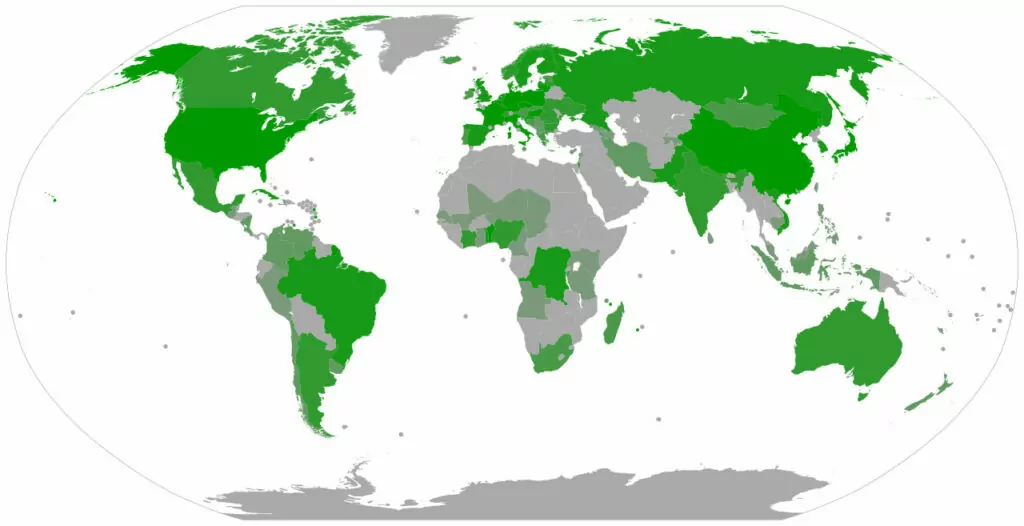
However, it is not the only example. In the 19th century, several people tried to compose universal languages to make trade and diplomacy easier. Before that, John Wilkins aimed to replace Latin with a more precise and unambiguous language to provide a better way for scientists and philosophers to communicate.
Finally, Hildegard of Bingen, a 12th-century nun, made up her own language called Lingua Ignota (“unknown language”) to use in her religious songs.
Learn and Have Fun
Besides the above, another reason why you might construct your own language is for the hell of it. There is a growing community of language enthusiasts and linguists who simply do it as a hobby or creative exercise.
After all, what better way is there to understand how language works than by trying to create your own? Doing so forces you to really understand and think through grammatical rules and the function of different language elements.
Plus, maybe your made-up language could spawn into a world-famous book series with a multi-million dollar movie deal, who knows?
How to Create Your Own Language Step-by-Step
Alright, now we are getting to the interesting part. Below, we will cover how to make up your own language in a series of steps.
An important word to be aware of at this point is “conlang”. It stands for “constructed language” and is what people who do this as a hobby or professionally call creating your own speech. The goal here is for you to end up with your own conlang.

Note that you don’t have to do the steps below in this exact order. They all influence each other, so you can go back and forth between them if one of them inspires a change to something you already covered.
In addition, while we are covering languages that are spoken out loud here, remember that that is not the only way to communicate. There is also sign language and other ways to convey meaning. Therefore, if you plan to create your own language, especially for fictional work, don’t feel constrained by spoken words.
1. Settle on Phonology
If you do go for a spoken language, your first is phonology. That means what it sounds like and it forms the basis for pretty much everything else.
Every language has a limited sound inventory that almost all words adhere to. There are always exceptions, of course, but, because phonology is mostly consistent, it’s usually easy to pinpoint them. Therefore, if you want your language to feel natural, you need to settle on an overall sound for it.
There are several ways to go about this. One way is to look to existing languages for inspiration. Is your creation going to be a tonal language like Mandarin or Vietnamese, where the meaning of a word changes depending on pronunciation? Will it use clicks like Xhosa, the rolled r of Spanish, or umlauts like German?
Humanity has found many different ways of speaking. Getting to know existing languages can help you collect ideas for your own.
Still drawing a blank?
In that case, you might want to check out the international phonetic alphabet. It basically contains all sounds the human mouth can produce including example recordings.
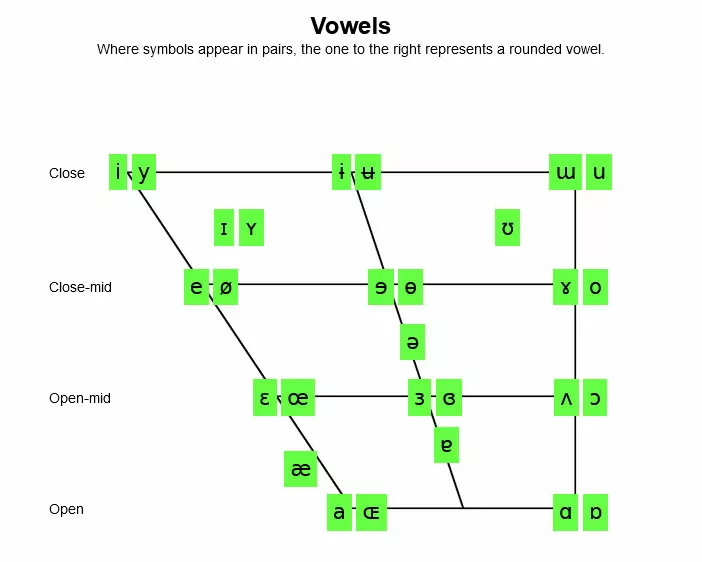
Create a table of consonants, vowels, or other sounds you want to include. That way, you can reference them when during the rest of the creation process and stay consistent.
However, you don’t have to limit yourself to normal phonology. If it makes sense for your language, you can also include elements that are not used in the real-world such as whistles or claps.
2. Invent Your Own Writing
Language is not just spoken (or even not spoken at all, as we settled earlier) but most often also written. So, when you create your own language, you not only get to decide what it sounds like but also how it looks on paper (or whatever people in your universe write on).
Here, too, you can look at language systems that already exist. Is your language using an alphabet that makes up all the words like English or does it have characters where each instance is a word in itself like Chinese? Does its writing only have consonants like Arabic, where the vowels are inferred? Or how about Egyptian hieroglyphs?

After you have made that basic decision, do you want to freehand your writing system completely from scratch or borrow from existing ones?
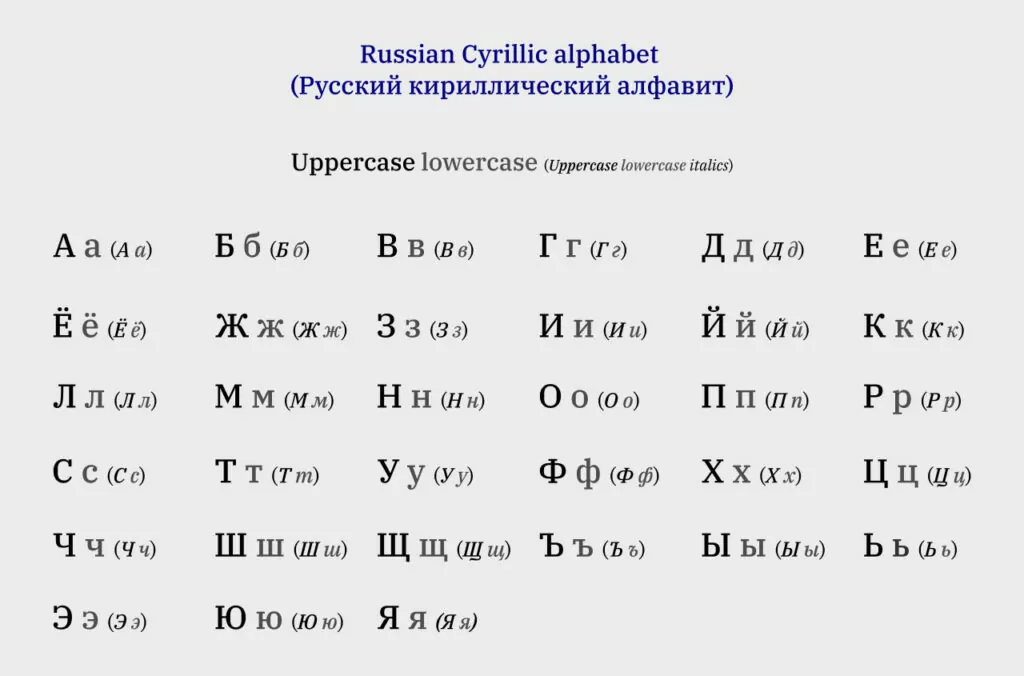
If you do borrow from elsewhere, consider using the same letters but changing their pronunciation. Plus, you have the possibility to use accent marks like é, ò, or ǎ.
Just be sure to note down the transliteration for your own language so you yourself don’t forget what your constructed language sounds like. Aside from that, the world is your oyster.
3. Create Your First Words
Once you can speak and write, you are in a good position to start building your basic vocabulary. How big that is going to be and what it contains really depends on your purpose.
Do you need a complete language or are a few words enough? Is it just some dialogue in a book or long conversations in a TV series? In some cases, starting with a naming language, which has just a few names for people and places or some simple phrases, may be enough.
In addition, what’s your topic? What will people talk about in your language? Hobbits? Magic? Space travel? This also dictates what kind of words you are going to need.
A good starting point is to begin translating everyday words, such as:
- Greetings — Think “hi”, “hello”, “good day”, etc. Note that you might also invent your own greetings based on the universe of your language. More on that below.
- Pronouns — Think about how your language would express concepts like “he”, “her”, “it”, “they”, etc.
- Articles and numbers — “the”, “a”, and the numbers from one to ten are always important.
- Common verbs — A surprisingly small number of verbs make up a large share of everyday language. If you need inspiration, you can start with this list in English.
Other ideas you can start with are days of the week, body parts, food, names for jobs, clothing, colors, etc.
Start a dictionary that you can add to over time as you encounter important concepts for your language or things in real life. Once you have a good stock of words, you can also experiment with combining them to create compound words. Here are some extreme examples of that from my native German.
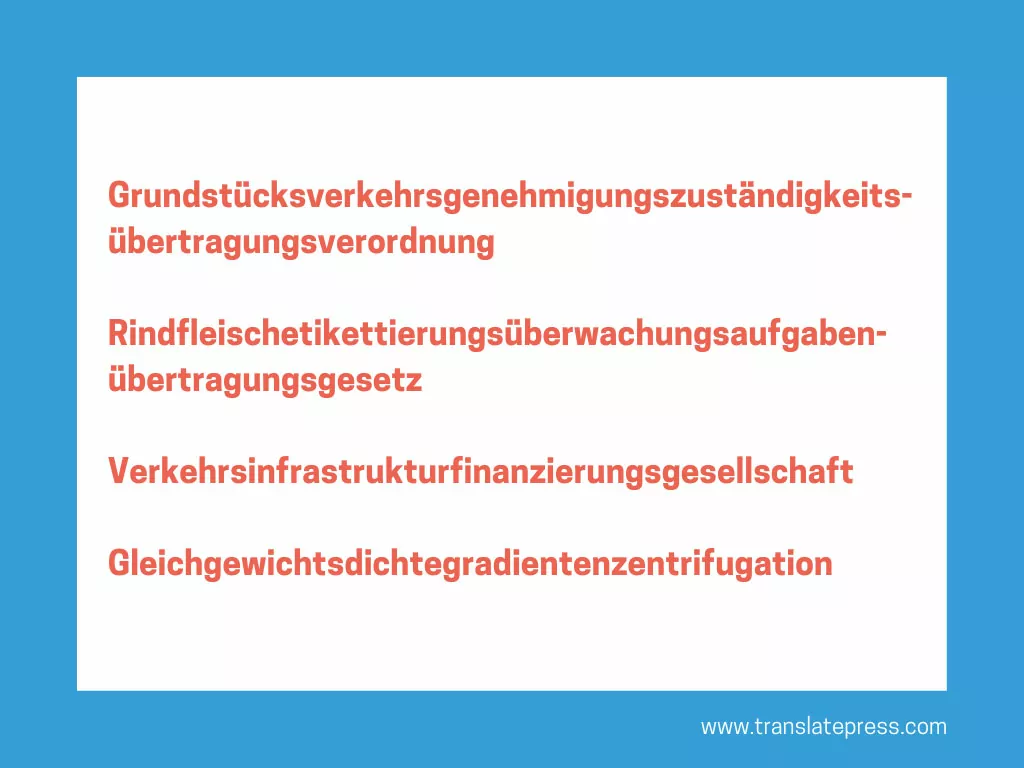
4. Define Your Grammar
With your first words in place, it’s time to figure how they work together. That’s where grammar comes in.
There are a lot of possible grammatical rules so it’s easy to get overwhelmed. So, start with the basics, which is word order.
Does your language use subject-verb-object (SVO) such as in English and many other languages (“I write poems”)? Do you prefer subject-object-verb (SOV) like in Japanese (“I poems write”)? Or do you want to arrange your sentence order in a different way?
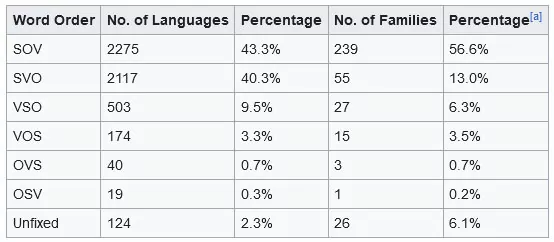
After that, there is a whole catalog of questions to think about:
- How does your language form plurals?
- How do you signify possession?
- Do words have different genders?
- Where do you put adjectives, adverbs, etc.?
- Are there cases and inflections in your language, meaning verbs and nouns change depending on grammatical position and function? Are there irregular verbs that don’t follow the same rules as others?
Here it really helps if you are familiar with the grammatical rules of different languages. It will give you a bigger pool to choose from. If you are struggling, refer to the resources below.
5. Invent Some Unique Quirks
Something that really helps make your language feel more authentic is to introduce quirks and idiosyncrasies.
For example, I had my mind thoroughly blown when I learned on a vacation to Thailand that the word “thank you” in Thai changes according to the gender of the speaker. Depending on whether you are a man or a woman, you use a different word to express gratitude and this applies to other words, too.
While I was, of course, familiar with the concept of words changing depending on who you address or the gender of what you are talking about, this was a new one. It is quirks like this that really make a language feel real and that you can use when creating your own.
One good way to approach this is to think about the context your language appears in. For example, we all know the adage that the Inuit have dozens of different words for snow. While the truth of that is debatable, it sounds believable because of the environment they live in.
How would the surroundings of your constructed language have shaped it? What kind of society uses it? What is the life like? Which topics would people talk about? How did the language evolve?
Thinking about these questions can help make your language more interesting.
6. Name Your Language
Finally, one of the fun parts is that you get to name your language. Here, the first thing to remember is to pick a name that is in keeping with its phonology.
Aside from that, the classic approach is to name it after the country or people who are using it. See German for Germany, Dothraki for the Dothraki people, or Klingon for, well, the Klingons.
However, you don’t have to do this. You can also come up with your own name that has a different meaning. For example, Tolkien called his languages Sindarin and Quenya. Both words mostly mean “language” in their respective dialect. So, you have some freedom in naming yours as well.
And don’t be too hellbent on getting it right the first time. Even Tolkien changed the name of the Quenya language several times before settling on the final name.
7. Look Into Useful Resources
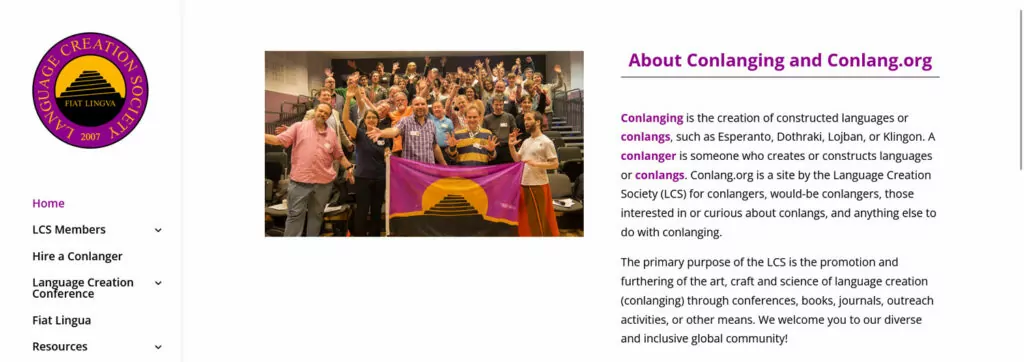
Above is a basic rundown of how you can go about creating your own language. Of course, we can not cover every single thing here since language is a complex beast and you can go into countless small details if you want.
Therefore, if you feel like diving deeper into this topic, you are in luck. There are plenty of people who create conlangs as a hobby and they have created many valuable resources to help others do the same. You can get started with these:
- The Language Construction Kit
- Language Creation Society
- r/conlang on Reddit
- A Conlanger’s Resource List
The above should be enough to keep you occupied for a while.
Create Your Own Language Using a Language Generator
If you really don’t have time to go through the process described here, you can also make up a new language with a generator. These are software solutions that can create a new language at the touch of a button.
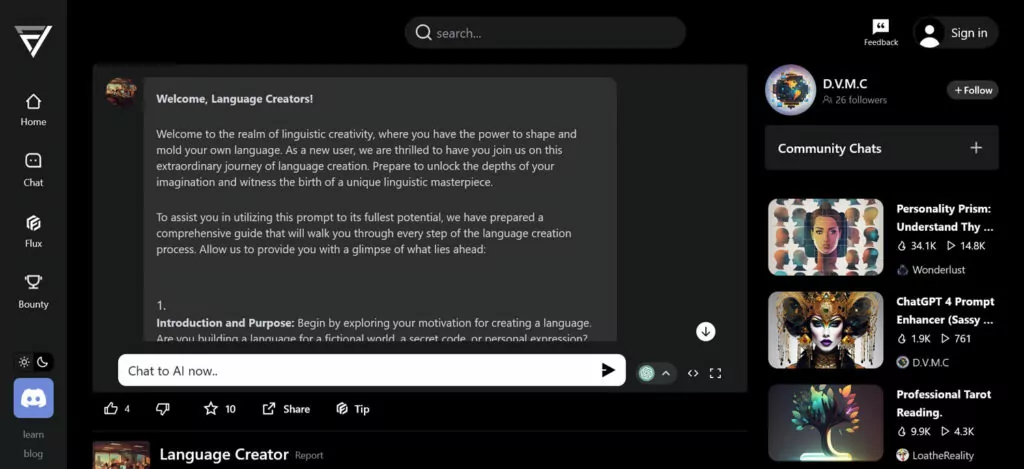
It’s not enough to invent your own secret language with friends but can suffice for a book or role-playing game. You usually simply choose some input such as phonemes you want to use or words you need and the generator will create the language for you.
If you want to give it a try, the best we could find are:
- Vulgarlang Conlang Generator
- Scriboly Word & Phrase Generator
- Taskade AI Language Generator
- FlowGPT Language Creator
The last two are AI language tools.
How to Use TranslatePress to Convert Your Website to Your Own Language
If you have finished your language and would like to translate your website to it (or any other language, constructed or not), you can do so very easily using TranslatePress. Our translation plugin has all the features you need to make your site multilingual, even when using a fictional language.
TranslatePress Multilingual
Just like making invented universes more engrossing, this opens up a lot of opportunities. Imagine offering the website for your fantasy novel in the language of one of the races. Wouldn’t that be a cool user experience?
So, here’s how to do it.
1. Create a New Language
With TranslatePress installed on your website, go to Settings → TranslatePress → Advanced → Custom Language.
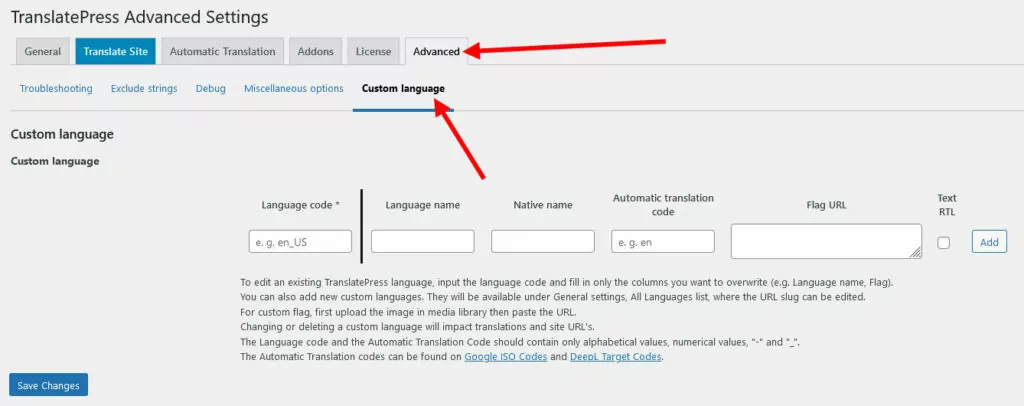
Here, you have the option to create your own language to use on your website. This is how to fill in the information:
- Language code — This is the abbreviation of the language that will be used in the URL, such as en for English or de for German.
- Language name — The name of your language in English.
- Native name — The name of your language in itself. There is an option in TranslatePress to display the native language name, which is what this information is for.
- Automatic translation code — Machine translation services like Google Translate and DeepL use this to recognize and automatically recognize languages. When translating to your own language, this is irrelevant.
- Flag URL — URL of a PNG image containing the flag of your language so that it can show up on your website.
- Text RTL — Check this if your language is written from right to left.
When you are ready, click Add. Here’s what it looks like in our example:

At the end, click the Save Changes button to save your custom language.
2. Add Your Constructed Language to Your Site
After this, in order to make the language available on your website, it’s time to head to General.
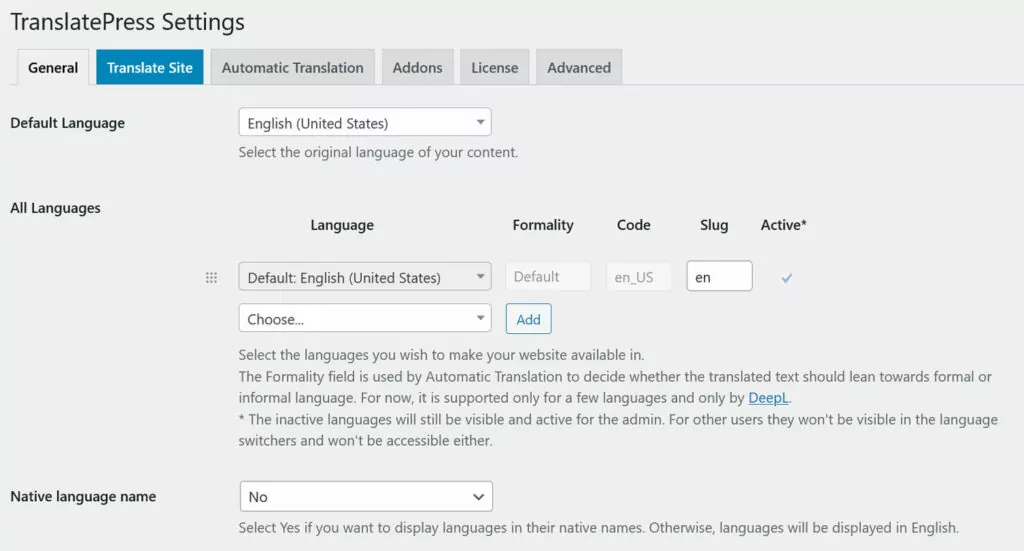
At the top, be sure that you have chosen the correct default language of your site (in this case, English). Then, under All Languages, use the drop-down menu to pick your new language. It should appear under Custom Languages.
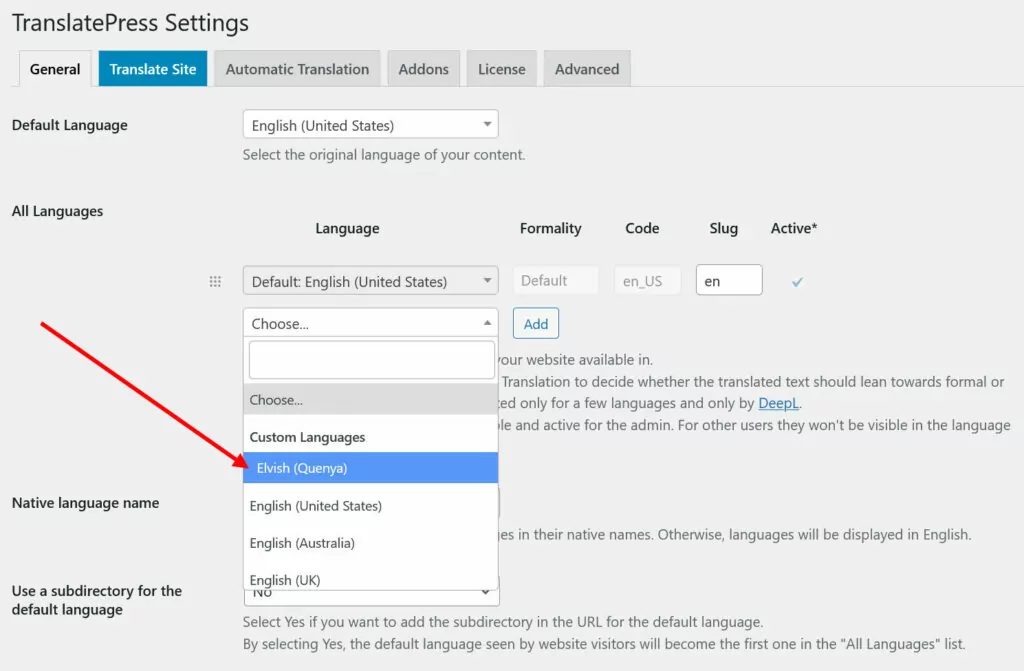
Click it and then hit Add. Make any other adjustments you need, such as customizing the slug, and save at the bottom.
3. Translate Your Content
Now the fun part begins. Click on Translate Site in the settings or WordPress admin bar.
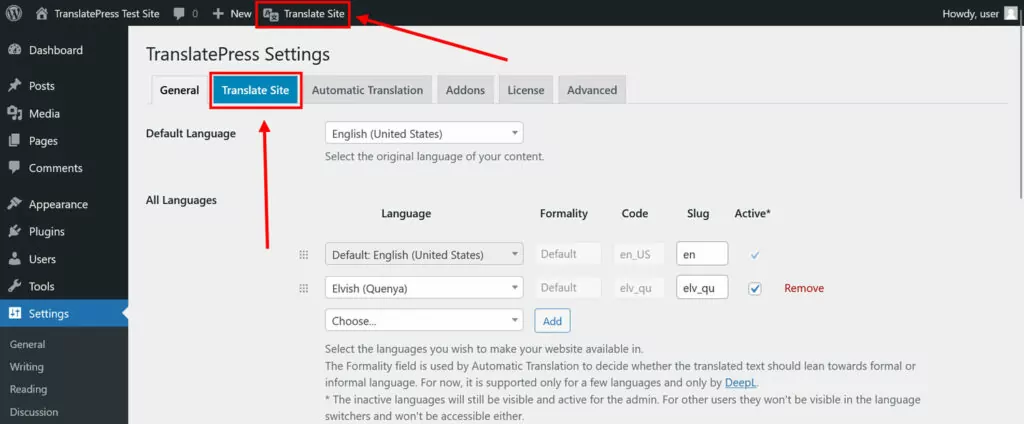
This lands you on the main translation interface.
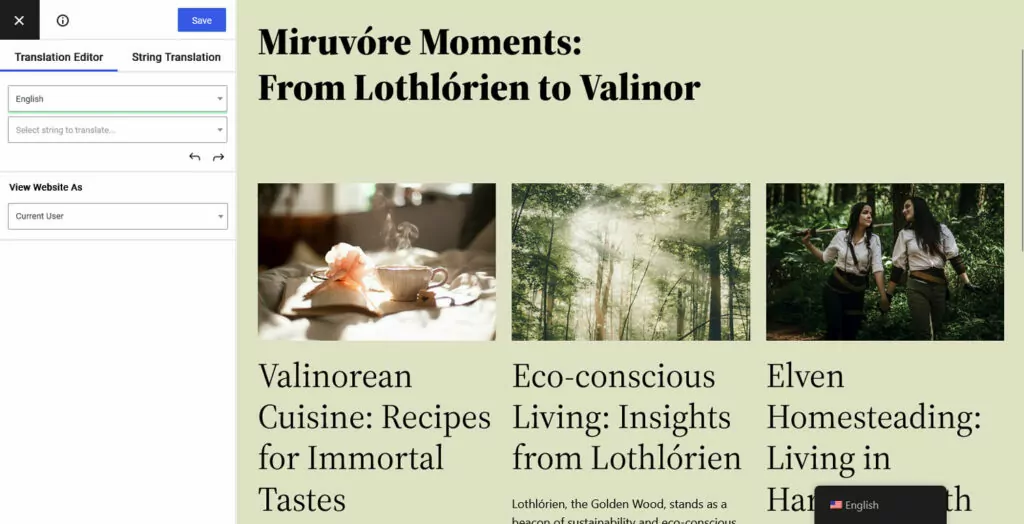
Here, use the drop-down menu at the top left to switch to your new language. This way, you will see all changes immediately.
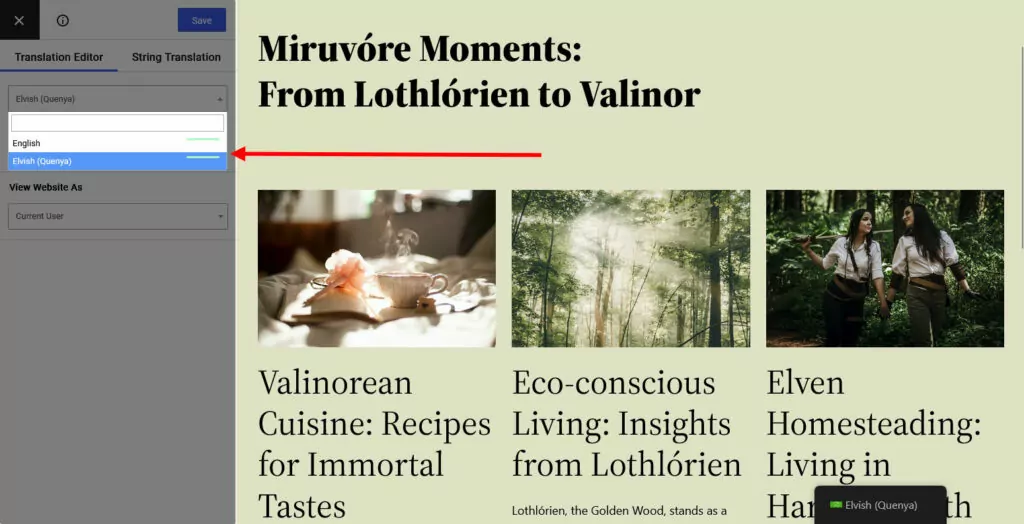
After that, pick the text you want to convert to your newly made-up language. You can do that via the second drop-down menu, back and forth arrows, or directly by hovering over any text in the preview window on the right and clicking the little pen symbol.
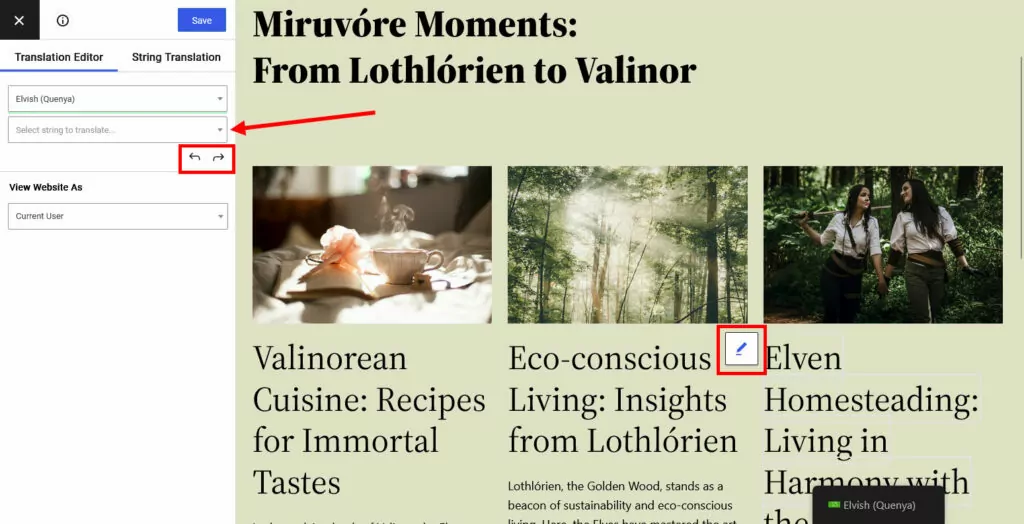
Doing so will open up a new field for providing the translation. Enter the translated word or phrase in your own language, then click Save at the top.
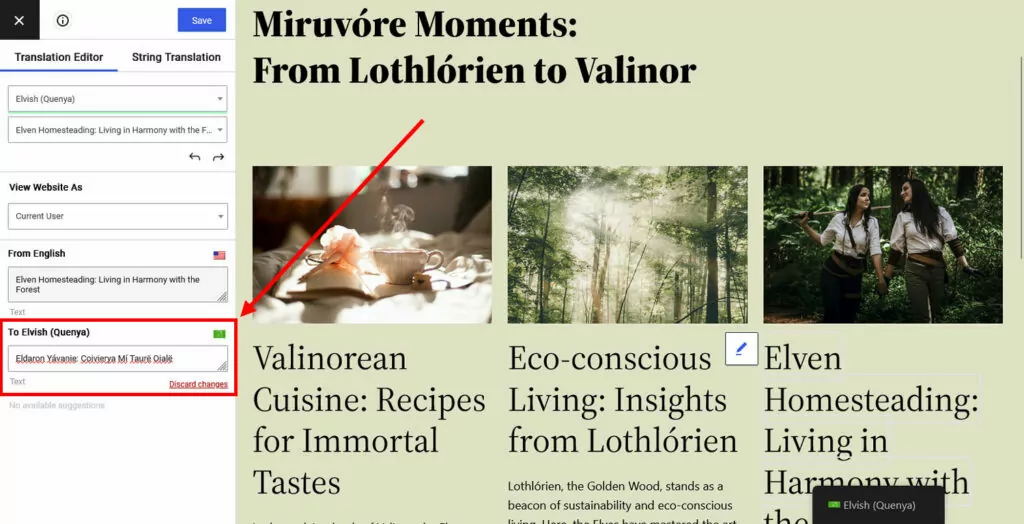
After that, the translated version will automatically appear in the preview window.
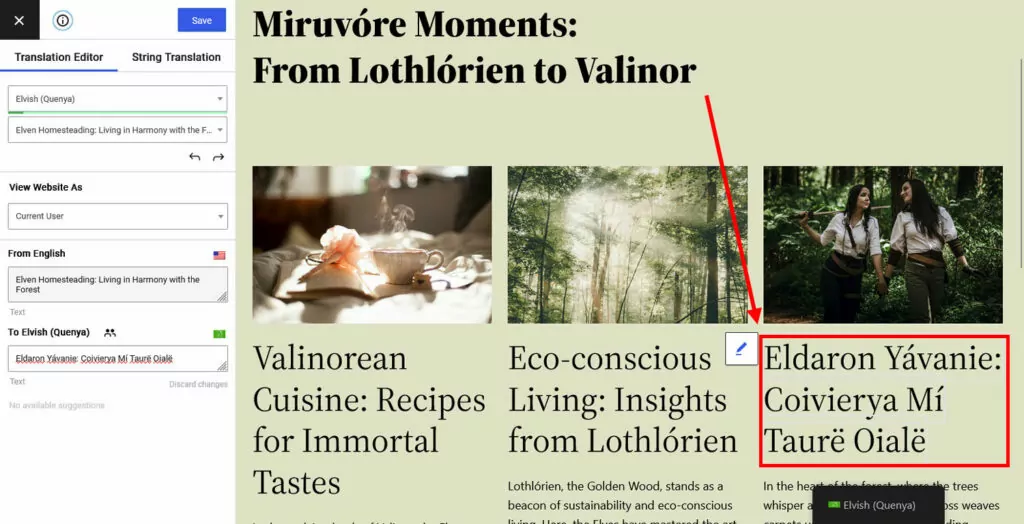
In addition, it will also be visible on the front end of your site whenever somebody uses the language switcher to see it in that language (you can also add one using Elementor).
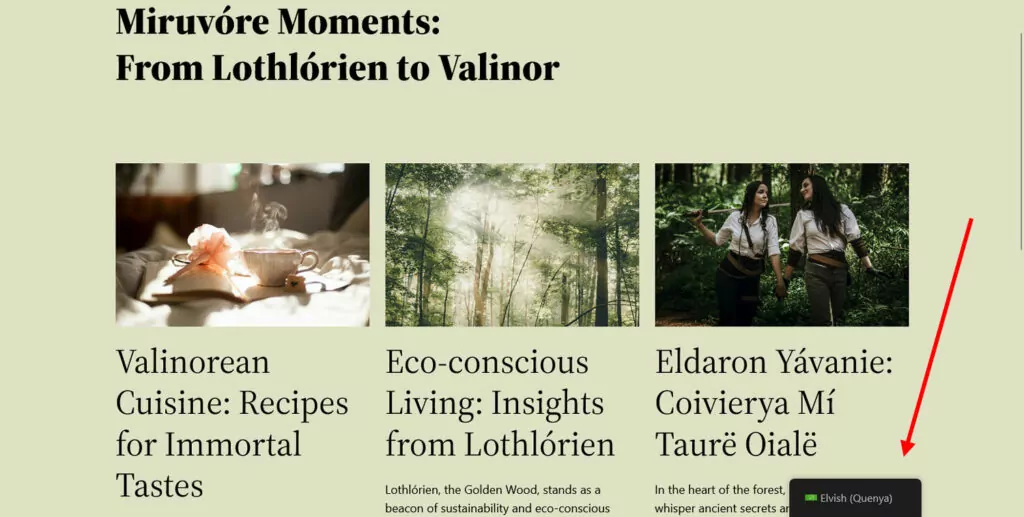
The best part is, you can use the same method to translate any images. Just pick them from the translation interface, provide a link to a localized version, and save.
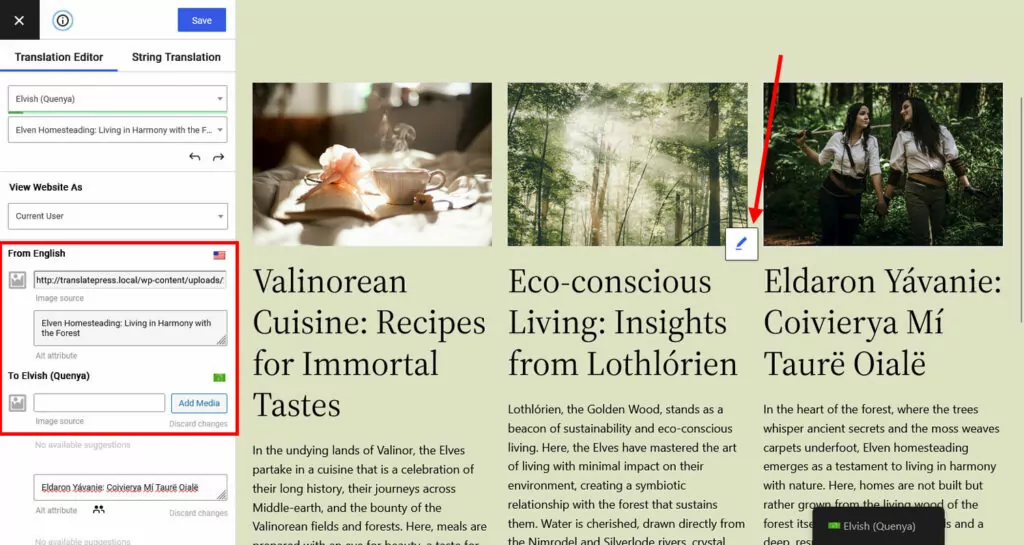
4. Take Advantage of Other Features
Aside from what we went over above, TranslatePress offers a number of useful features to make turning your website multilingual super easy:
- Automatic translation — When not translating into languages that nobody else knows, you can use machine translation services like Google Translate and DeepL to convert your site more quickly and easily. Note that only Google Translate is available in the free plugin version.
- String translation — Translate strings from themes, plugins, WordPress itself, and more.
There is also a premium version of TranslatePress with additional features:
- Multilingual SEO pack — Translate your page URLs, SEO titles, meta descriptions, ALT tags, and other important SEO markers. This is super important to get found on Google.
- Translator accounts — If you are working with translation agencies and freelancers to convert your website to other languages (that you didn’t invent), you can make it easier by allowing your service providers to do translations directly on your site.
- Browse as user role – Look at your site as a specific user role in the translation editor. If your site has content for different user levels, this lets you understand if it has all been properly translated.
- User language-specific navigation – Adds the ability to display different menus for different languages.
- Automatic user language detection – Automatically show your website in a user’s preferred language (via browser settings or location).
TranslatePress Pro comes in three pricing tiers so you can pick what makes the most sense for you.
TranslatePress Multilingual
What Language Will You Invent?
Creating your own language can be a fun exercise to flex your linguistic muscles or serve a particular purpose such as making a fictional work more believable. It can also simply be a way to explore how language works or serve a number of other purposes.
Above, we have gone over the process of inventing languages. You first settle on a basic sound inventory, then branch out into an alphabet, create the first words, and move on to grammatical rules that make them work together. The final touch are some quirks and oddities that make language more alive and authentic.
You are now fully equipped to try and create your first conlang. If you want to take a shortcut, try out one of the language generators. Finally, if you are looking for a way to use your newly constructed language (or any other additional language) on your own website, be sure to give TranslatePress a try.
Are you trying to create your own language currently? What are you most struggling with? What do you enjoy the most? Let us know in the comments!

